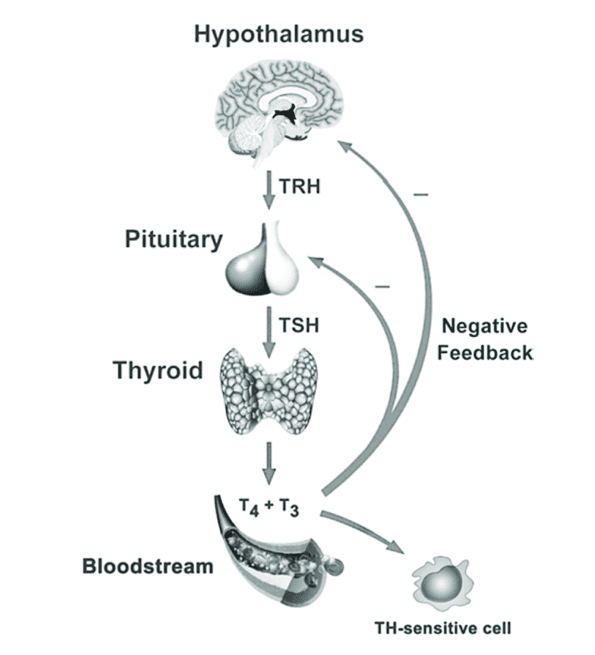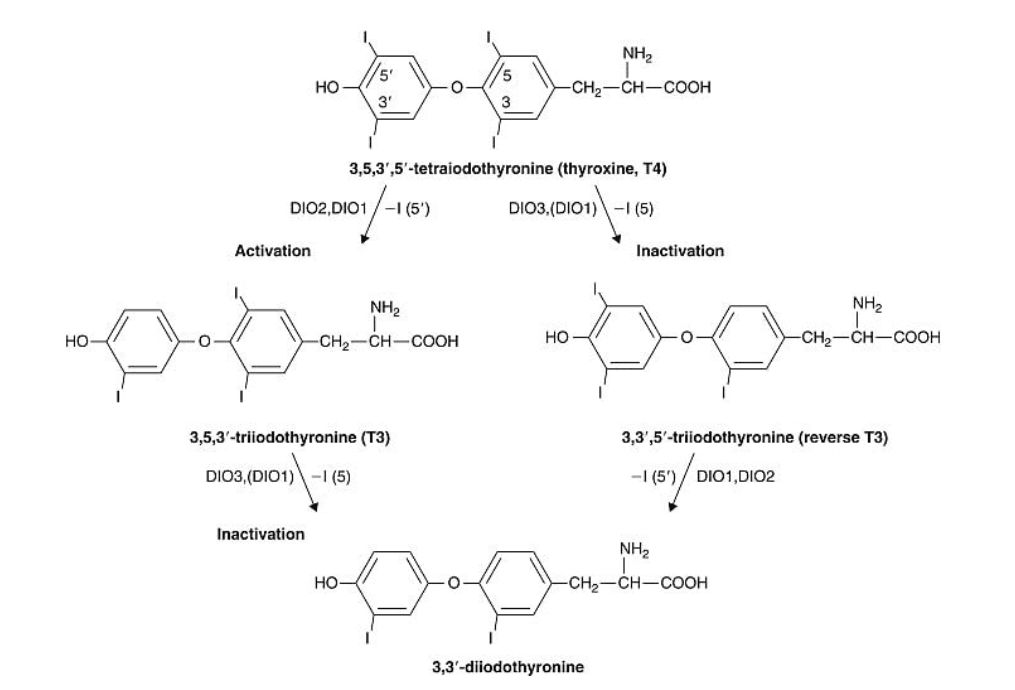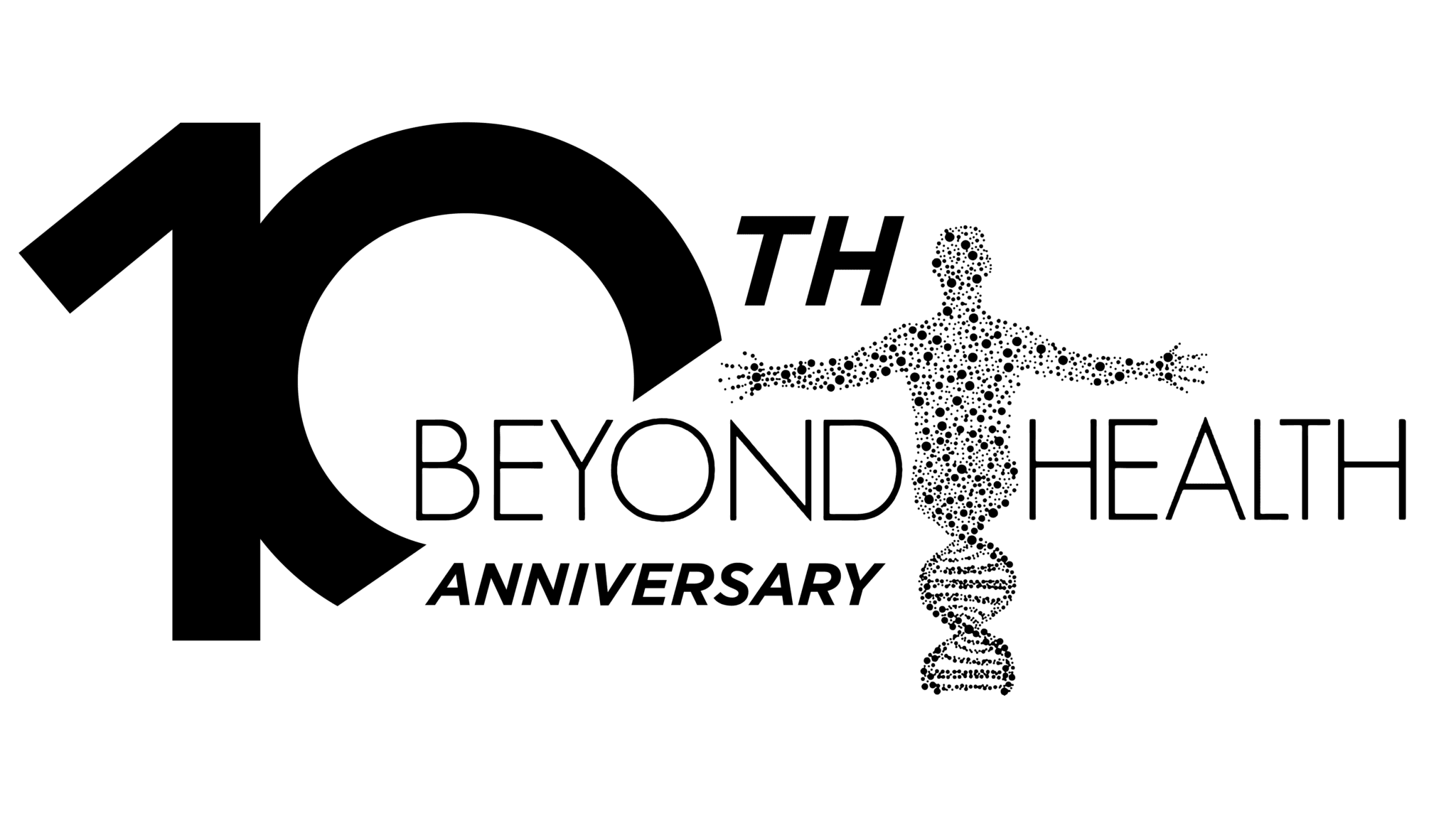No wellness regimen is complete without adequate attention paid to the thyroid – the all-important butterfly-shaped gland located at the base of the throat.

When all is well with the thyroid, the body’s metabolism hums along at optimal speed and the cells have plenty of energy to burn supplied by the mitochondria; when things go wrong, thyroid dysfunction can trigger a hormonal cascade of negative effects that reduces quality of life and jeopardizes your health.
Here, we’ll take a dive into what the thyroid does, why it matters, and — perhaps most critically – what many endocrinologists miss when diagnosing and treating thyroid disorders.
What Functions Does the Thyroid Gland Serve?
As part of the endocrine system, the thyroid is responsible for secreting hormones that regulate various physiological processes, acting as chemical messengers throughout the body.
The thyroid produces three particular hormones:
- Triiodothyronine (T3) – “active” thyroid hormone
- Thyroxine (T4) – “inactive” thyroid hormone
- Calcitonin (a peptide hormone responsible for balancing calcium [Ca2+] blood levels)
In combination, T3 and T4 are responsible for multiple physiological functions in the body, including:
- Regulating metabolism. Most importantly, T3 and T4 boost the basal metabolic rate, meaning the rate at which the body utilizes energy, either via blood glucose (blood sugar) or lipolysis (fat burning).
*This is the reason that hypothyroidism (characterized by abnormally low thyroid hormone levels) is associated with unwanted weight gain and, also, why affected patients may struggle to lose weight even after modifying their diets and increasing exercise.
- Normal bone and tissue development
- Cardiovascular function. The thyroid hormones help control oxygen levels, mitochondria function (the “batteries of the cells”), and the rate of respiration.
*This is the reason that patients affected by thyroid dysfunction often report breathing difficulties, abnormal heart rates, arrhythmias, etc.
- Sleep patterns (circadian rhythm)
- Sexual desire (libido)
Other Hormones and Glands Implicated in Thyroid Function
The thyroid gland operates on feedback loops (the scientific nomenclature for the regulatory processes that balances hormone levels to maintain homeostasis) with several other glands, structures, and hormones — most notably the pituitary gland and the hypothalamus (located in the mid-brain region).

This interface is often referred to as the hypothalamic–pituitary–thyroid axis (HPT axis):
“TRH, produced in the hypothalamus, is the central regulator of the HPT. It functions via neurons originating in the paraventricular nucleus (PVN), which integrates multiple neuronal and humoral signals and resets the HPT axis according to variations of external and internal environmental conditions. The TRH activates TSH in the pituitary that stimulates the secretion of thyroxine from thyroid which, in turn, exerts a negative feedback on TSH and TRH secretion.”
So, basically, as illustrated above, the hypothalamus releases thyrotropin releasing hormone (TRH), which then travels to the pituitary to release thyroid stimulating hormone (TSH), which then travels to the thyroid to trigger the release of the thyroid hormones.
Then, once the hypothalamus detects sufficient thyroid hormone concentrations in the blood, it slows the release of TRH, completing the feedback cycle.
*Complex interactions within various structures of the endocrine system such as the HPT axis illustrate the importance of taking a holistic approach to balancing hormones with a careful weighing of all factors – considerations which, unfortunately, many doctors overlook (see later section for more on the importance of expertise in effectively treating thyroid disorders).
Thyroid Disorders: Hypothyroidism vs. Hyperthyroidism
Many patients may find the terminologies at play regarding the thyroid confusing, particularly the distinction between hypothyroidism and hyperthyroidism. Each condition is detrimental to long-term health in distinct ways. Let’s dissect the differences.
Hypothyroidism
Hypothroidism (“hypo” being a prefix meaning “low” or “insufficient”) refers to the condition in which the thyroid doesn’t produce adequate quantities of the thyroid hormones.
The common symptoms of hypothyroidism include:
- Depression
- Lethargy (lack of energy and/or motivation)
- Chronic fatigue
- Unwanted weight gain (due to slowed metabolism)
- Muscle cramps/weakness
- Cold sensitivity
Official estimates put the percentage of the US population suffering from hypothyroidism at about 5%, with women experiencing higher rates on average. The likelihood of developing hypothyroidism increases with age – supporting the importance of thyroid care as part of your anti-aging strategy.
Hyperthyroidism
Hyperthyroidism (“hyper” being a prefix meaning “high” or “excessive”) refers to the condition in which the thyroid produces an overabundance of thyroid hormones.
The common symptoms of hyperthyroidism include:
- Anxiety and/or nervousness
- Weight loss (often rapid)
- Heart palpitations
- Increased heart rate
- Heat sensitivity
- Disruptions to menstrual cycle (for women)
According to official data, roughly 1-3% of Americans are affected by hyperthyroidism. Again, the risk of hyperthyroidism rises with age.
Diagnostic Testing For Thyroid Function
A variety of diagnostic tests – some more common than others – can be used to assess thyroid function from multiple angles. A sample of such tests includes:
- Thyroid stimulating hormone (TSH)
- T3 (free and total)
- Reverse T3
- T4 (free and total)
- Thyroid antibody tests*
In many instances, such as Hashimoto’s disease, an autoimmune condition (in which the immune system malfunctions to target healthy tissue) may trigger thyroid dysfunction.
T4-Converting Enzymes: The Overlooked Culprit of Thyroid Disorder
We previously surveyed the complexities presented by the hypothalamic–pituitary–thyroid axis (HPT axis) in terms of optimizing thyroid function – but the thyroid issue gets even thornier upon closer examination.
The body converts T4 (the “inactive” thyroid hormone) to T3 (the “active” thyroid hormone). The effective conversion is absolutely essential for health, as T3 is substantially more physiologically efficacious than T4.

*Two dietary minerals, zinc and selenium, are critical for the effective conversion of T4 to T3. In cases of thyroid dysfunction, proper attention should be paid to investigating potential deficiencies in this regard. When appropriate, zinc and/or selenium supplementation may be advised.
The T4-to-T3 conversion process is mediated by enzymes called deiodinases:
“T4 is converted into T3, the active form of thyroid hormone, by two enzymes called deiodinases. People with hypothyroidism are treated with a synthetic T4 hormone, which the enzymes convert to T3. This treatment is usually effective, but some people continue to have symptoms even after treatment… This may be caused by a problem with the enzymes that convert T4 into T3.”
When low deiodinase levels are the root issue in cases of thyroid dysfunction, drugs like Levothyroxine that increase that production of T4 are useless because the issue lays in the conversion of T4 to T3 – which requires enzymatic treatment, not more T4.
The takeaway: even if you’ve undergone routine clinical testing with results that came back “normal” for T4 counts or have taken medication to boost T4 levels, that doesn’t necessarily mean you’re out of the woods in terms of your thyroid function.
Deeper, more thorough diagnostic work may reveal underlying issues with the deiodinase enzymes that your endocrinologist or primary care physician might have missed.
Beyond Health Specializes in Treating Difficult Thyroid Issues
If you have been affected by a hormone imbalance, you should be aware that recovering your good health and youthful vitality is possible – and likely to be more affordable than you thought.
Since its inception, BEYOND HEALTH has been a pioneer in New Mexico hormonal care, specializing in the exciting new practice of bioidentical hormone replacement therapy (BHRT).
BEYOND HEALTH has helped thousands of Albuquerque women correct the hormone imbalance that triggers the menopausal symptoms described earlier.
Get started today by contacting BEYOND HEALTH via our simple contact form. Alternately, our staff can also be reached by phone at (505) 899-4414 or by email at info@beyond-health.com. We prioritize making a prompt reply to your inquiries and requests.
This article has been reviewed and approved by our medical team.
*This website is for educational purposes only. It is not intended as a substitute for the diagnosis, treatment, and advice of a qualified licensed medical professional. This site offers people medical information and tells them their alternative medical options, but in no way should anyone consider that this site represents the practice of medicine. This site assumes no responsibility for how this material is used. Also note that this website frequently updates its contents, due to a variety of reasons, therefore, some information may be out of date. The statements regarding alternative treatments for cancer have not been evaluated by the Food and Drug Administration

